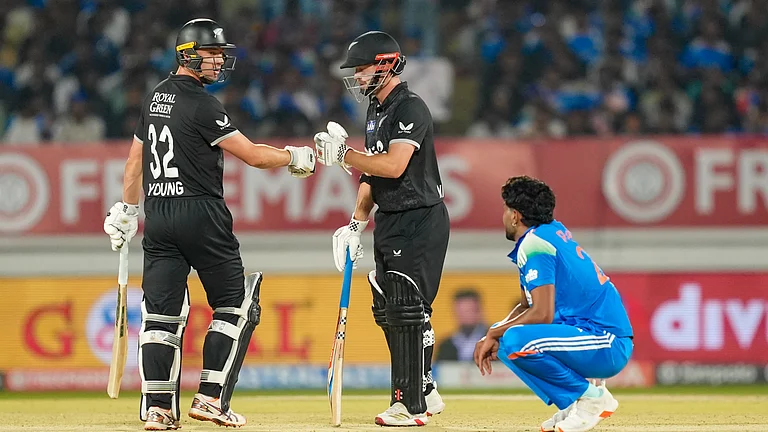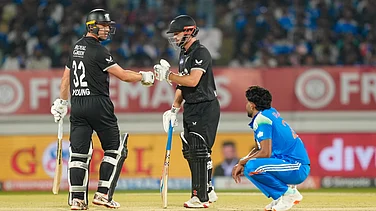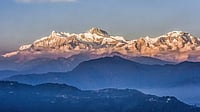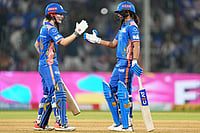It is generally agreed that the 1998 World Cup was when football became as markedly multi-cultural as a United Colours of Benetton advert. And the face of that movement was Zinedine Zidane, the Algerian-origin star of the French team. (More Football News)
France hosted that World Cup and won it. Zidane, the son of immigrants, raised in the unforgiving projects of La Castellane in Marseille, was the team’s creative fulcrum. He ran the attack from midfield and scored twice in the final against Brazil. During the celebration that followed, Zidane’s intense face with its deep set Clint Eastwood glare, was beamed on to the Arc de Triomphe in Paris.
In addition to Zidane, the team had several players who were foreigners or black. France have been traditionally called ‘Les Bleus’. The 1998 side was termed ‘black, blanc, beur’ (black, white, Arab).
Since then, it has become common for many traditionally white teams to have players of different ethnicities. France especially became an embodiment of the phenomenon. Twenty years after 1998, when they won the 2018 World Cup, a staggering 87 per cent of its squad was made up of immigrants or descendants of immigrants. These included superstars such as Kylian Mbappe and Paul Pogba. The team even had a player of Filipino heritage, Alphonse Areola.
Germany, who rarely had players of colour in the past, also started to become browner. At the 2010 World Cup in South Africa, their 23-man roster had 11 players with foreign roots. These included big names like Lukas Podolski and Mesut Ozil, the kind of player who inspires that favourite football adjective – ‘talismanic’.
In Qatar, Germany had eight players of African origin and one with a French connection. Even their plane had ‘DiversityWins’ inscribed on it, though that was partly a rejoinder to Qatar’s controversial rules and attitudes towards subjects such as homosexuality.
Foreigners in teams are so common that in Qatar, only four out of the participating 32 teams had all players born in their own country – Argentina, Brazil, Saudi Arabia and South Korea.
The reasons for the increased presence of immigrants or their progeny in teams range from policies of countries to Fifa rules, not to mention refugees seeking asylum.
France have so many foreigners because the nation was in dire need of labour after the second World War. Huge numbers of workers were enlisted from their colonies, such as Sudan, Ivory Coast, Morocco and Algeria, to name a few. The labourers stayed on in France and their subsequent generations ended up playing football.
In Germany, it was decided at the turn of the century that even people who were born in Germany, and were not necessarily German descendants, could become German citizens. Of course, as long as they met other criteria. Jus sanguinis (by ethnicity) and jus soli (by birth) were the Latin terms for the categories.
“Until the end of the 1990s, you were either a German or a foreigner. There was nothing in between,” Ferda Ataman, the German government’s federal anti-discrimination commissioner, wrote in an article in 2018.
Elsewhere in the piece, she wrote, “On January 1st, 2000 not only did a new millennium begin; on that day, German society reinvented itself. While mankind was recovering from its millennium hangover, a law came into force in our country that gave a new answer to the question ‘Who is German?’ "
Refugees is the other reason why teams have a mixed look about them. The family of Australian striker Garang Kuol, originally from South Sudan, found refuge first in Egypt, then in Australia. The same was the case with the families of two of Kuol’s teammates, Thomas Deng and Awer Mabil.
These changes haven’t always gone down well. Terrorist acts such as the 9/11 attacks, coupled with economic strain and the growth of social media polemic, have divided the world in the last two decades. Self and national interest have become the priority. Racism and hostility towards foreigners, footballers included, has increased.
In 2018, Germans condemned Ozil, who is of Turkish origin, for meeting Recep Tayyib Erdogan, Turkey’s controversial President. The backlash left Ozil hurt and disillusioned. In a huff, he ended his international career with Germany.
“For me, having a picture with President Erdoğan wasn’t about politics or elections, it was about me respecting the highest office of my family’s country,” Özil posted on Twitter. “My job is a football player and not a politician, and our meeting was not an endorsement of any policies.”
He then said something that many mixed heritage players have said over the years in different words, including Karim Benzema, the France and Real Madrid hero of Algerian stock.
“I’m German when we win, an immigrant when we lose,” Ozil said.
But the game goes on. The World Cup goes on. That the world will be increasingly mixed race is an inevitability. To an extent, this is a result of the West’s own selfishness and its history of pillaging and exploitation. It is one of football’s triumphs that it keeps bringing multi-culturalism to the forefront every time two teams line up for their national anthems.


























